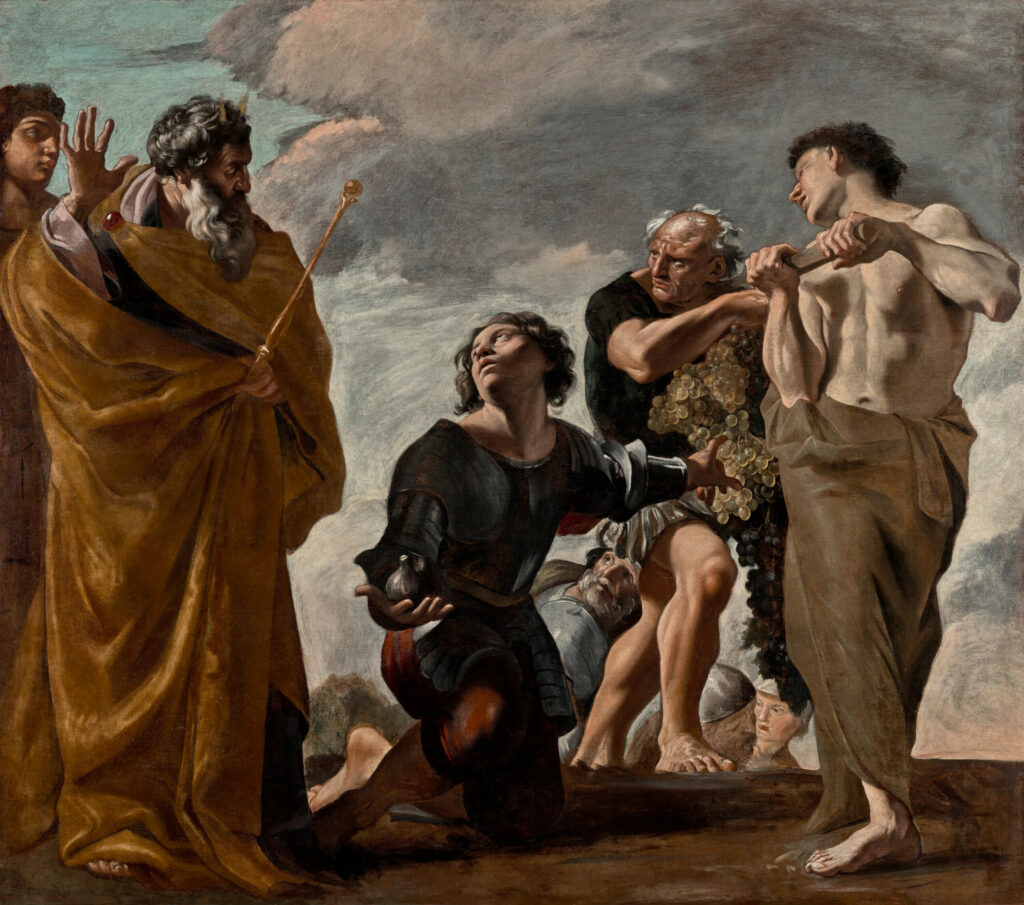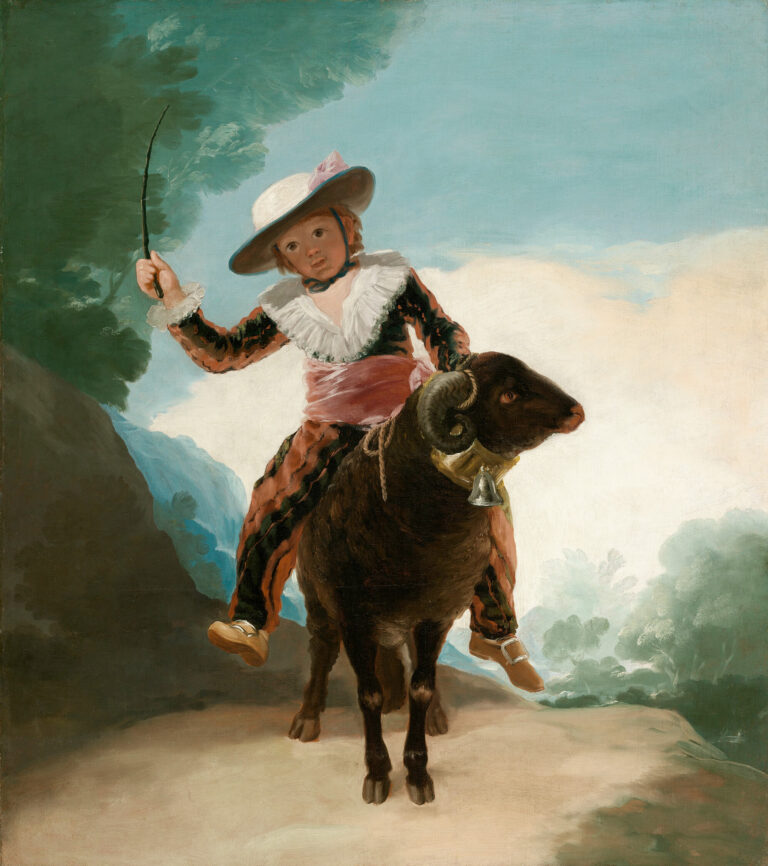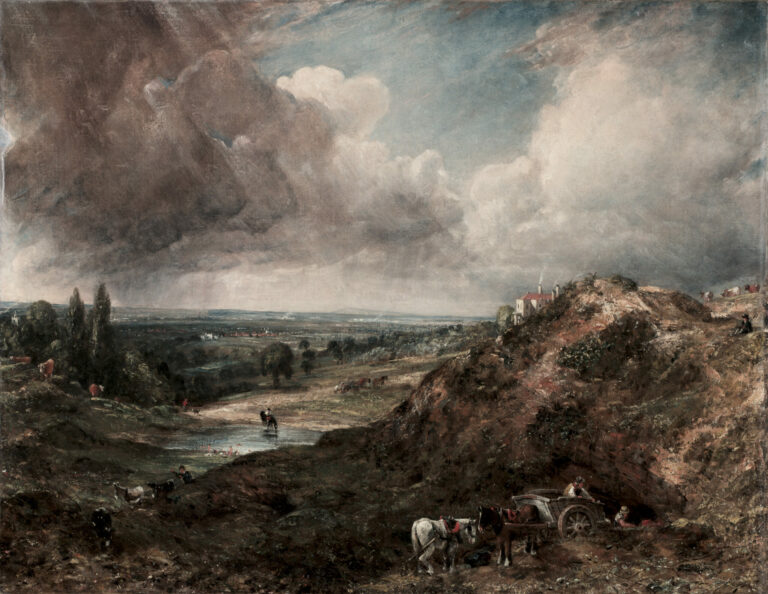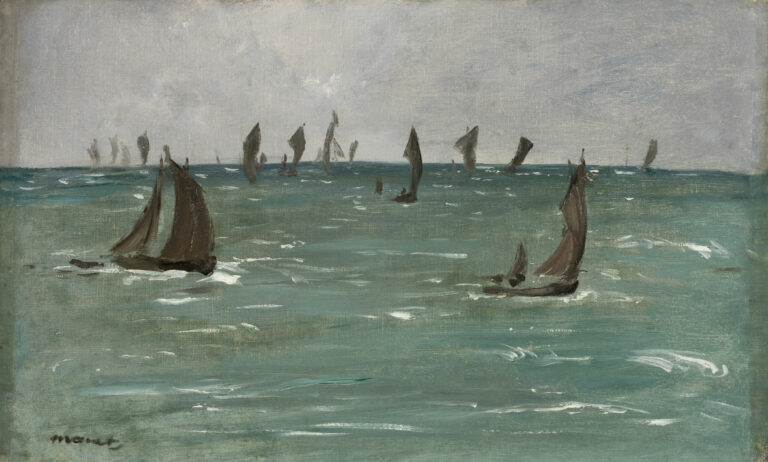
Rome, 1621. Giovanni Lanfranco receives a prestigious commission for the Basilica of Saint Paul Outside the Walls. He must illustrate the Old Testament for the Chapel of the Blessed Sacrament. The painter chooses a decisive episode: the return of the spies from Canaan, the Promised Land.
A Monumental Composition
Look at these imposing figures, painted from a low angle. Lanfranco represents them as seen from below, giving them a sculptural presence. On the left, Moses stands in his golden cloak, hand raised in a sign of authority. In the center, kneeling, a figure presents a fruit. Behind him, two men with robust shoulders support a pole laden with grapes. The artist masters contrasts: shimmering fabrics against stormy skies, luminous flesh against dramatic shadows. The ample drapery reveals the influence of nascent Baroque. This painting was intended to be installed at height, hence this ascending perspective that amplifies the majesty of the figures.
A Religious Symbol
In the Book of Numbers, Moses sends spies to verify the fertility of Canaan. They return laden with grapes, pomegranates, and figs. “It flows with milk and honey,” they announce. For 17th-century Catholic theology, these generous grape clusters prefigure the wine of Communion. Lanfranco translates this biblical parallel into monumental painting for the chapel of Saint Paul Outside the Walls.
Giovanni Lanfranco, Baroque Master
Born in Parma, Lanfranco (1582-1647) studied under the Carracci in Bologna. He settled in Rome where he became a pioneer of Italian Baroque. His theatrical compositions and bold foreshortening would influence an entire generation.
💭 Think About It: In the face of climate and migration crises, can we still believe in the promises of a land of abundance?
About this work
- Moses and the Messengers from Canaan, Giovanni Lanfranco, 1621–1624
- Oil on canvas, 219.7 × 249.6 cm
- The J. Paul Getty Museum, Los Angeles
- https://www.getty.edu/art/collection/object/103R9P






